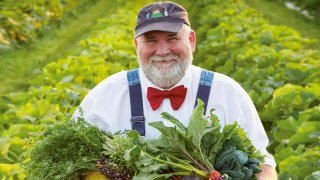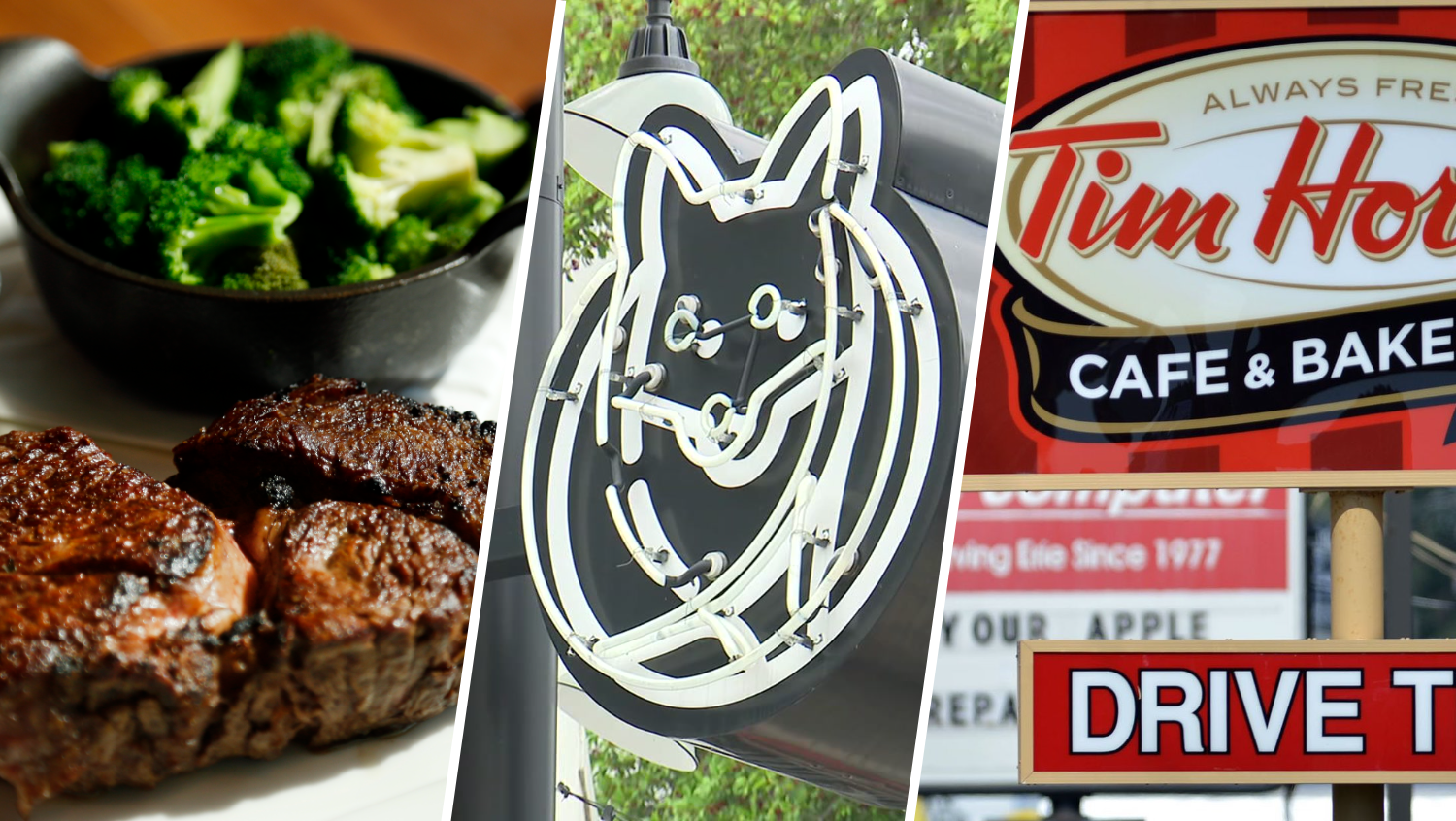
Despite thousands of years of humans working the soil, there are still things to learn. Just ask Farmer Lee Jones about the beet leaves.
The Ohio-based farmer had planted too many beets and the surplus was dumped in a pile in a cooler. He returned later to find that when he dug below the first layer, to where the beets got no light exposure, beautiful leaves were growing out of the vegetable in the dark.
“It’s a yellow leaf with red veins. And it’s one of the sexiest things that you can imagine,” he says. “We’re like, ‘Holy smokes, this is nicer than anything we grew on purpose!'”
You might not find plants particularly sexy until you speak to Jones and catch his infectious enthusiasm for farming. He's a relentless experimenter, willing to try new techniques, new ideas and new flavors.
Get DFW local news, weather forecasts and entertainment stories to your inbox. Sign up for NBC DFW newsletters.
“There are literally thousands of plants and vegetables to be explored,” he says. “We have a saying that we try and work in harmony with Mother Nature rather than trying to outsmart her.”
Jones' deep knowledge about vegetables and growing them is soon available via “The Chef’s Garden: A Modern Guide to Common and Unusual Vegetables — with Recipes.” The 640-page handsome book is equal parts vegetable reference bible, family memoir and recipe collection. It comes out April 27.
“We try in the book to really look for different ways to be able to utilize plants in America. We kind of think one-dimensionally,” he says. "We do bone marrow. Why can’t we do vegetable marrow?”
The Scene
Jones is the face of The Chef’s Garden, a sustainable, 350-acre family farm in Huron that provides chefs worldwide with seasonal specialty vegetables, microgreens, herbs and edible flowers.
Name a starry chef and there's a good chance they've done business with The Chef’s Garden: José Andrés, Alain Ducasse, Daniel Boulud, Thomas Keller and Ferran Adrià, among them. With his welcoming air and signature denim bib overalls and red bow tie, Jones has become something of a celebrity, too.
The Chef’s Garden grows 700 kinds of vegetables, with 150 to 200 more in trials. There's a lab where scientists analyze the soil and seeds, and there's also the Culinary Vegetable Institute, which attracts 600 visiting chefs a year to share their knowledge and cook together.
Readers of the book will find new ways to prepare vegetables, from celery root to cauliflower, and learn about more unusual ingredients like carrot seeds, knotweed and radish seed pods.
“For several thousand years, we always ate only the top of the carrot plant. It’s only been in the last few hundred years that we started eating the bottom of the carrot. Now nobody eats the top,” Jones says.
Jones' farm is surrounded by 5,000-acre commercial farms, and he does things differently: Instead of chemicals, he uses 15 species of cover crop to replenish the soil. He argues that American farmers have lost their way regarding food and health.
“I don’t knock the other farmers. They’re following the model that exists and that’s to keep the costs as low as possible and the tons per acre as high as possible. It’s not about the integrity of the plant. It’s about the tons per acre,” he says. “We’re a bunch of odd ducks out here, for sure.”
Above all, Jones emphasizes taste and minimizing waste. He looks to Europeans, who learned over centuries of struggle with food insecurity to use every part of their animals.
Take oxtail, a peasant food for years. “They figured out great ways to make good dishes with the flavor of the oxtail. And then Thomas Keller comes over here and puts an oxtail on a plate and it’s 90 bucks.”
Jones wants to showcase vegetables, and the book offers attractive and tasty options, from Butter-Poached Squash with Hemp Seed and Coriander to Potato Pierogi with Caramelized Onion Chips.
The book has a forward written by Andres and is co-written with Kristin Donnelly, with recipes by Jamie Simpson. Lucia Watson, the book's editor for Avery, says it is timely.
“Vegetables are the center of our plate more and more. And it is kind of where all of the exciting cooking is coming from — experimenting with vegetables," she says.
"This gives home cooks an incredible window into that and an incredible resource. It introduces them to vegetables that they may not have heard of before, but they see at their farmer’s market and think, 'What if I brought that home? What would I do with it?' And it also makes them look at vegetables that they’ve taken for granted.”
Jones got his love of farming from his dad and keeps a foot in the past — he admires what farmers before him accomplished and reveres old farm machinery — as well as embracing modern technology for things like crop analysis and distribution.
“My dad had a saying that the only thing we’re trying to do is get as good as the growers were 100 years ago. It was pre-chemical, pre-synthetic fertilizer, rotating the land, rebuilding the soil,” he says.
COVID-19 was a wake-up call for Jones to diversify since The Chef's Kitchen found its links to chefs and cruise lines severed when those business shuttered. The farm has since pivoted to nationwide home delivery and opened a farmer's market while it waits for restaurants to rebound.
But Jones, ever the optimist, sees a silver lining even in a pandemic: There has been a surge of people interested in growing their own food and planting vegetables.
“Kids emulate parents behavior. And guess what? Parents planted gardens and kids wanted to go help. And when a kid grows a carrot and they pull it out, even if they didn’t like it before, they’re more interested in trying a carrot," he says. "So I think out of the ashes of this we have to find those good things.”
___
Online: https://www.farmerjonesfarm.com/pages/book
___
Mark Kennedy is at http://twitter.com/KennedyTwits



